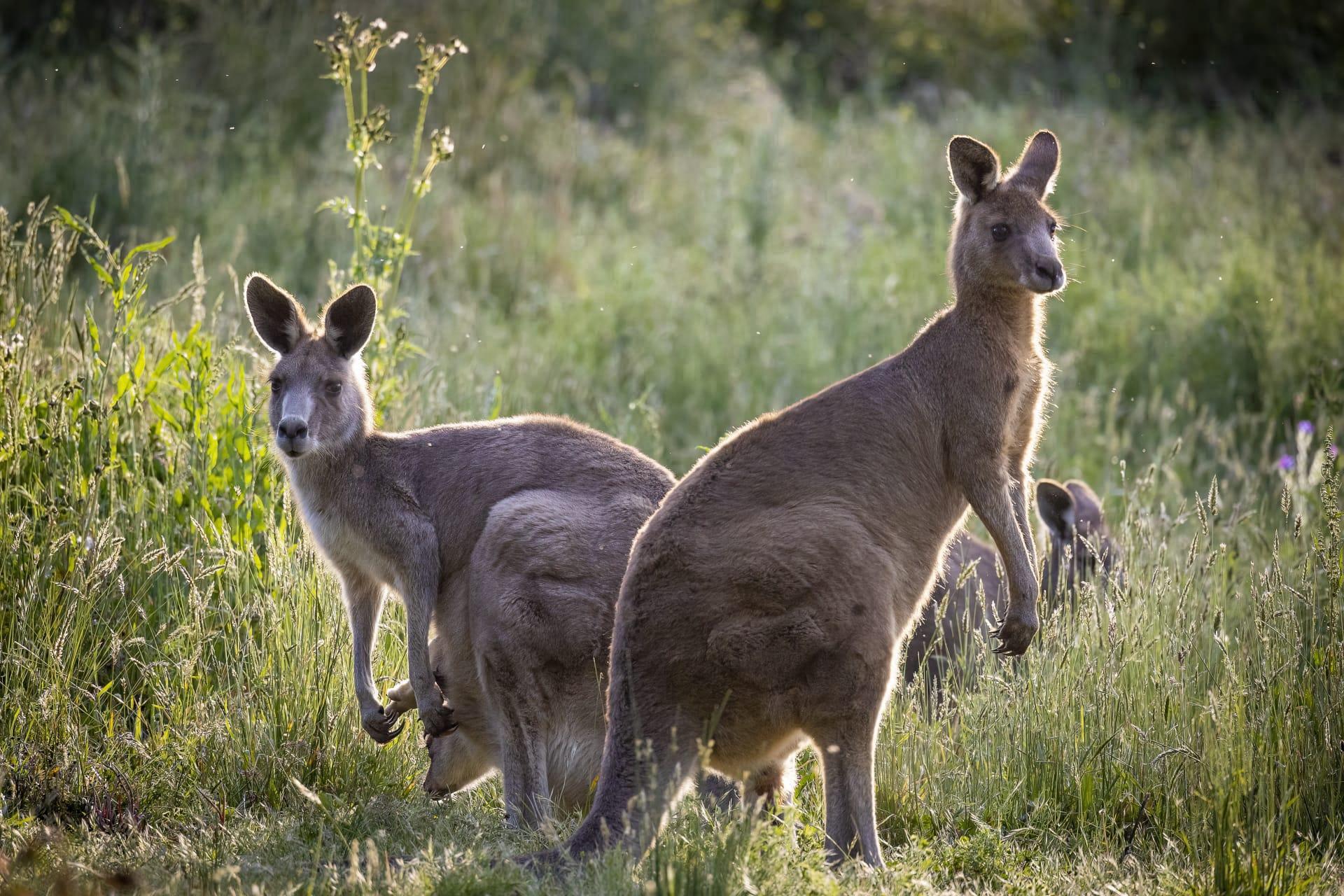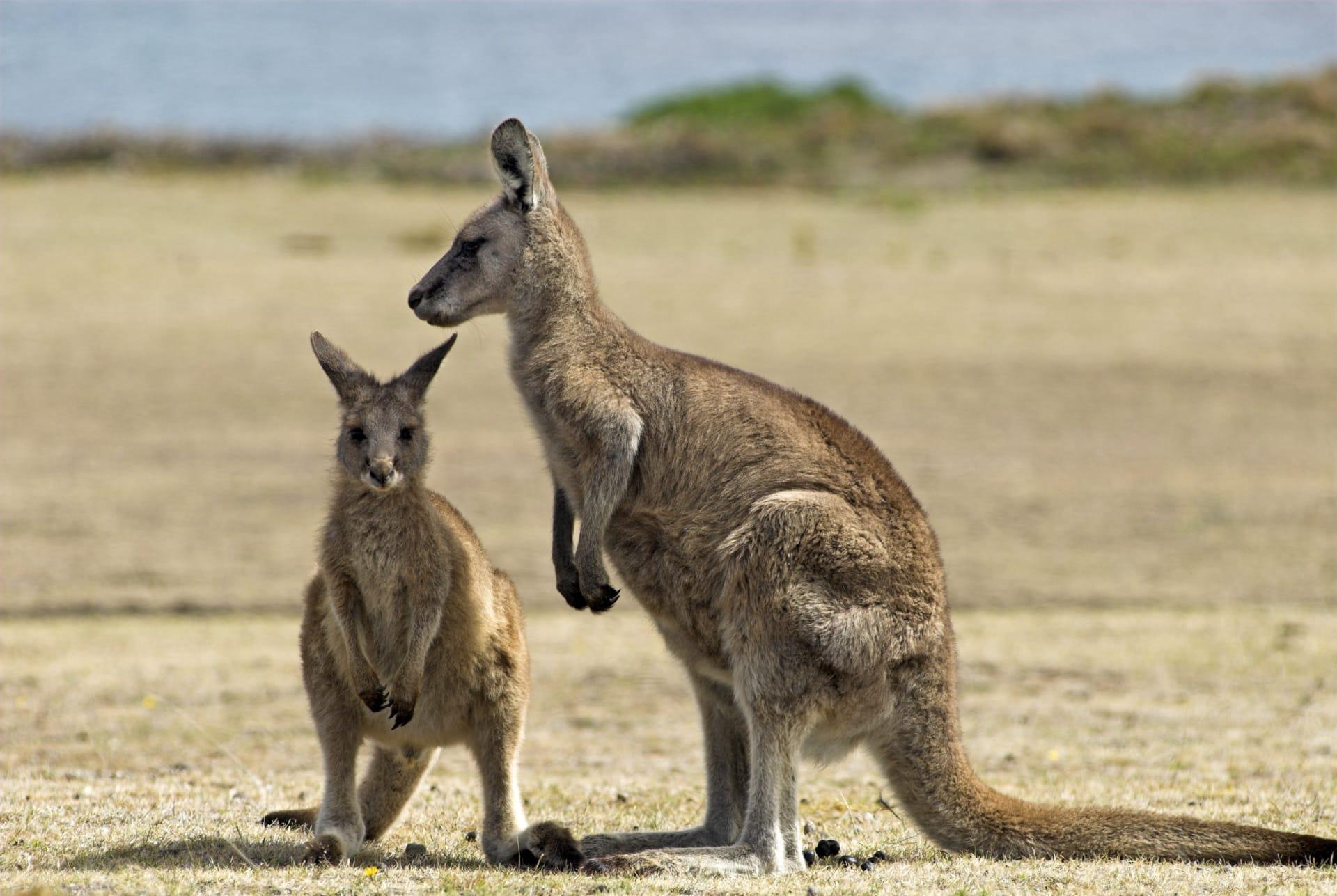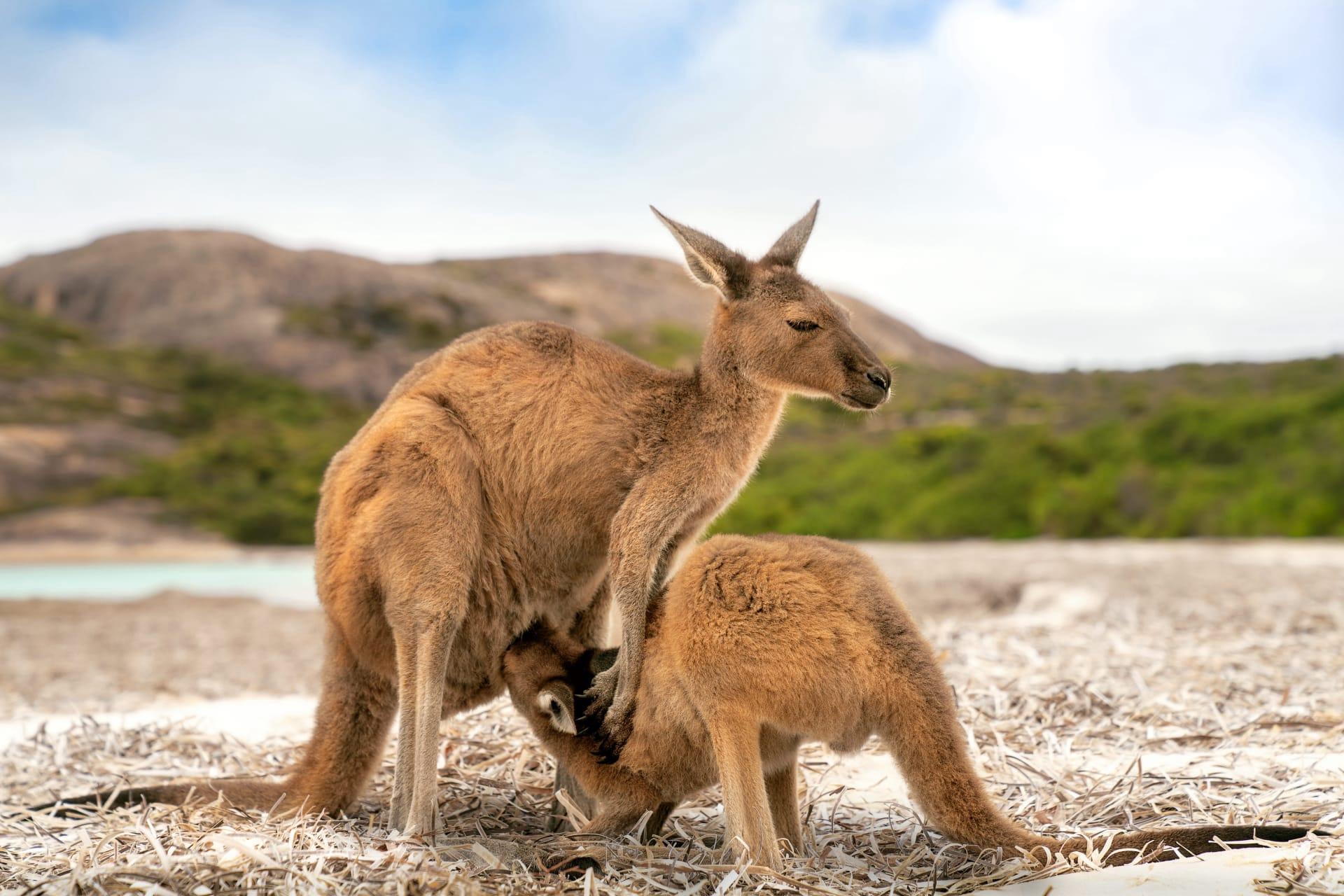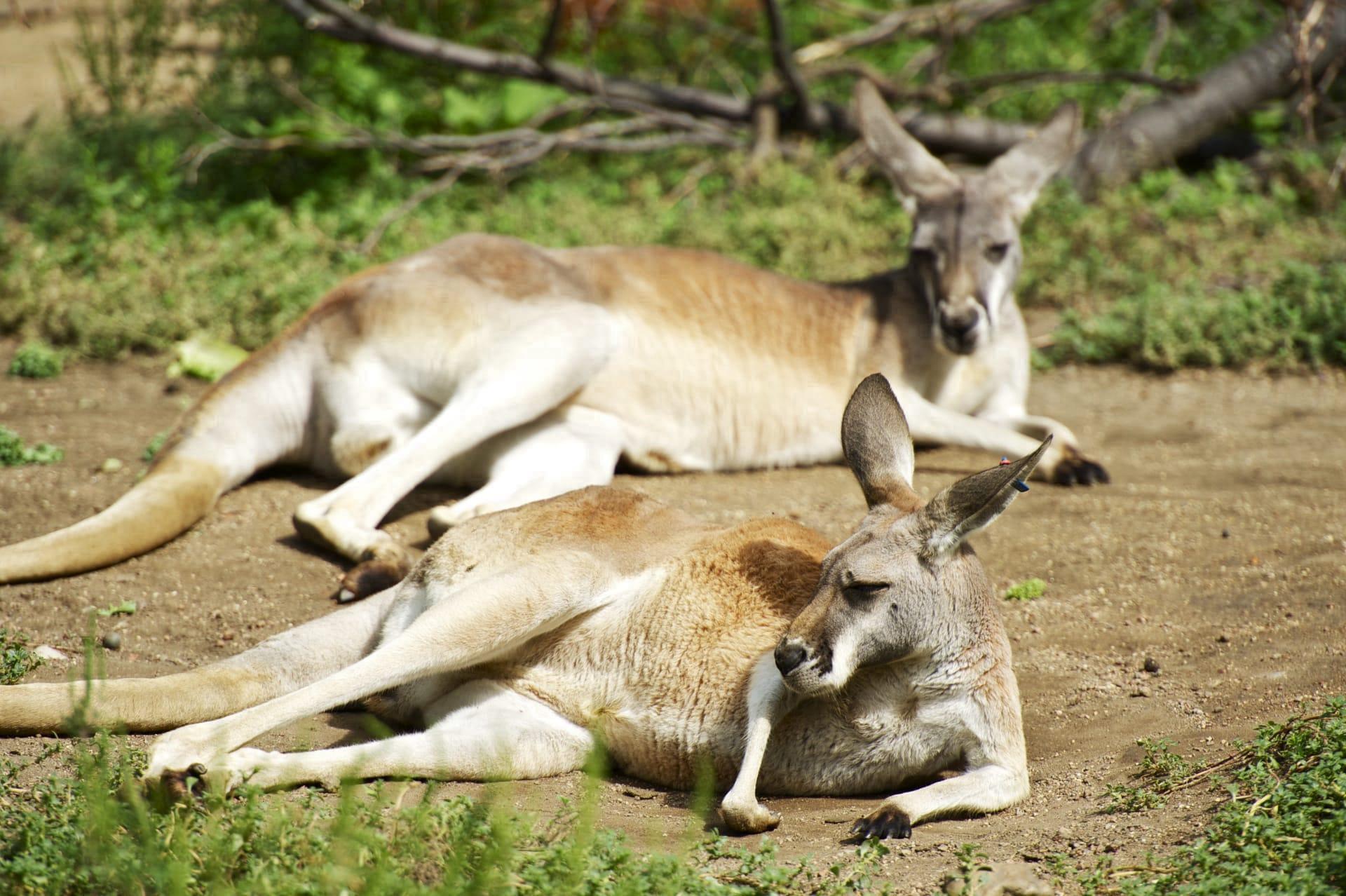Kangaroo Trivia
- Home /
- Trivia Question /
- Animal /
- Kangaroo Trivia
1
Question: How fast can a kangaroo hop and what enables this speed?
Answer: Kangaroos are renowned for their ability to hop at high speeds. They can reach up to 44 miles per hour (70 km/h) in short bursts. This incredible speed is due to their powerful hind legs and large feet, which act like springs, and their muscular tail that provides balance. The unique structure of their legs prevents them from moving easily at slow speeds but makes them highly efficient at fast speeds.
Question: What is the lifespan of a kangaroo in the wild?
Answer: Kangaroos in the wild have a varied lifespan, typically ranging from 6 to 8 years, but can live up to 23 years in rare cases. Factors influencing their lifespan include predation, environmental conditions, and human impacts. In captivity, with the absence of predators and regular veterinary care, they can live longer, often up to 20 years.

2
Question: Do kangaroos really box each other?
Answer: Yes, kangaroos do engage in boxing-like behavior, but it's not quite like the boxing humans do. Male kangaroos often "box" as a way of determining dominance and mating rights. They stand on their tails to kick with their powerful legs more than they punch with their small arms. This behavior is more about displaying strength than causing harm.
Question: Can kangaroos move backward?
Answer: Kangaroos cannot move backward effectively. This limitation is due to their large, muscular tail and the structure of their hips and hind legs, which are designed for forward movement. This trait is also why kangaroos are used as a symbol of Australia, representing the idea of always moving forward.

3
Question: What do baby kangaroos eat and how do they develop?
Answer: Baby kangaroos, called joeys, are born extremely underdeveloped and continue to grow in their mother's pouch. Initially, they feed exclusively on their mother's milk, which changes in composition as they grow. After about 4-5 months, they start to peek out of the pouch and gradually begin to eat small amounts of grass and leaves. Full pouch exit happens at about 8 months, but they continue to nurse until they are about 12-18 months old.
Question: How far can kangaroos jump in a single leap?
Answer: Kangaroos are known for their impressive jumping abilities. They can leap up to 25 feet (7.6 meters) in a single bound and can cover more than 30 feet (9 meters) in a horizontal jump. This ability is not just for speed; it's also an efficient way to travel long distances in their native Australian landscapes, conserving energy over the vast, open terrain.

4
Question: How do kangaroos regulate their body temperature in the extreme Australian climate?
Answer: Kangaroos have several adaptations to manage the often harsh Australian climate. They primarily regulate their body temperature by panting, sweating, and licking their forearms, where the blood vessels are close to the surface, to cool down. Kangaroos also tend to be more active during the cooler parts of the day and rest in the shade during the hottest hours, further helping them regulate their body temperature.
Question: Are kangaroos social animals, and how do they interact with each other?
Answer: Kangaroos are indeed social animals and usually live in groups called mobs. These groups can vary in size from a few individuals to over a hundred. Within a mob, kangaroos communicate and interact through a variety of sounds, body language, and grooming. The social structure is typically dominated by the strongest male, and the group provides protection against predators.

5
Question: What are the main threats to kangaroo populations?
Answer: The primary threats to kangaroo populations include habitat loss due to land clearing and agricultural practices, vehicle collisions, and predation by wild dogs and foxes. In some areas, kangaroos are also subject to regulated hunting. Conservation efforts focus on habitat preservation and management of human-wildlife conflicts to ensure sustainable kangaroo populations.
Question: Do kangaroos have unique fingerprints like humans?
Answer: Interestingly, kangaroos do have unique fingerprints, much like humans. Researchers have found that the fingerprints of kangaroos are remarkably similar to human fingerprints, even under microscopic examination. This similarity is fascinating, considering the evolutionary distance between the two species, and is a topic of interest in the study of evolutionary biology and forensics.